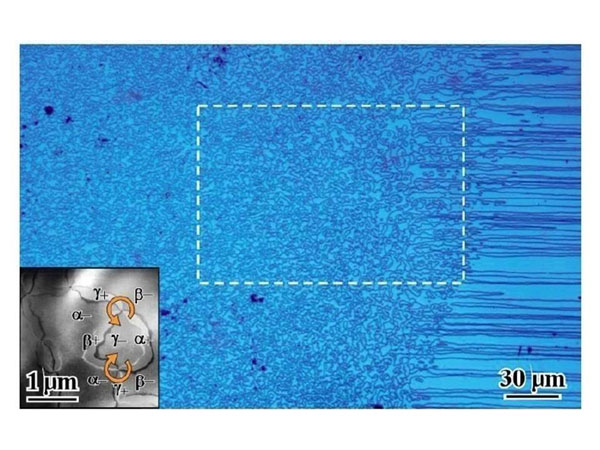Publication Nature Materials: Manganites for low-energy magnetic memory
FOM theoretical condensed matter physicist Prof. Maxim Mostovoy of the University of Groningen has found a new mechanism that keeps electric and magnetic dipoles in crystals of hexagonal manganites firmly locked to each other. Energy consumption in magnetic memory devices can be lowered by such a coupling of electric and magnetic properties. Mostovoy published his theoretical results together with researchers from ETH Zurich and UC Santa Barbara on the Nature Materials website on 27 October 2013.
When the electric polarisation of a material is coupled to another property, like the magnetic moment or the strain within the material, the material is said to be multiferroic. 'Multiferroic materials are interesting because coupling of electric and magnetic dipoles can be used to switch the direction of a magnetic moment by applying voltag,' says Prof. Maxim Mostovoy. 'This allows the energy consumption of magnetic memory devices to be reduced. So far, researchers have focused on magnetoelectric coupling in perfect materials. However, switching magnetism with a voltage requires domains with different properties to be connected, or clamped. We have shown that hexagonal manganites with disorders in their crystal structures are an example of how such clamping can occur.'
Defect patterns
When materials are exposed to heat, strain, or a magnetic or electric field, their microscopic structure often changes. Irregularities in the crystal lattice are inevitable and can be theoretically described by using so-called topological defects. Complex patterns of such defects have been found in crystals of hexagonal manganites with three different ordered states. Mostovoy and his colleagues have found a way to explain why the defects in ordered states of electric and magnetic dipoles are firmly locked to each other in these materials. They used the Landau theory to describe how the three different ordered states coexisting in hexagonal manganites – distortion of the crystal lattice distortion, ferroelectricity and magnetism – are coupled to each other.
Ferroelectrics
Experiments have revealed that the surface of hexagonal manganites is covered by beautiful ‘cloverleaf’ patterns, which are defects in the periodic lattice distortion. The density of these defects can strongly vary depending on how the crystal was made. Mostovoy: 'Remarkably, the distortion of the crystal layers in manganites also induces an electric dipole moment perpendicular to the manganese layers. This means the hexagonal manganites are ferroelectrics, a class of materials heavily used in modern electronics, for example in sensors, actuators and memory devices. Recent conducting and piezoforce microscopy studies by others have shown that the electric polarisation in hexagonal manganites changes sign at the boundaries between differently distorted phases. This makes it possible to control electric polarisation through distortion in the crystal lattice and vice versa.'
Clamping
Experiments have shown that the electric and magnetic properties in the crystals are clamped in certain temperature regions: changing one property induces the other to change accordingl, Mostovoy says.Dictated by symmetry, the Landau theory predicts that in hexagonal manganites, only those crystal structures that combine electric and magnetic properties are stable.'
In most multiferroics studied so far the electric polarisation is tiny because it is induced by very weak magnetic interactions. Very strong electric fields are then needed to flip magnetic dipoles in such materials. In conventional ferroelectrics (used in electronics) there is no coupling with magnetism. Mostovoy: 'Although hexagonal manganites operate at temperature that are impractical for actual applications, they provide a new paradigm in the quest for novel multiferroic materials as they combine large polarisation with the strong magnetoelectric coupling at topological defects.'
Contact: Prof. Maxim Mostovoy
Reference
Landau theory of topological defects in multiferroic hexagonal manganites
doi:10.1038/nmat3786

More news
-
02 December 2025
Student Menna Zahran wins Unilever Research Prize
-
27 November 2025
Aeroplane spotting using a radio telescope
-
26 November 2025
Why are shiny colours rare yet widespread in nature?
